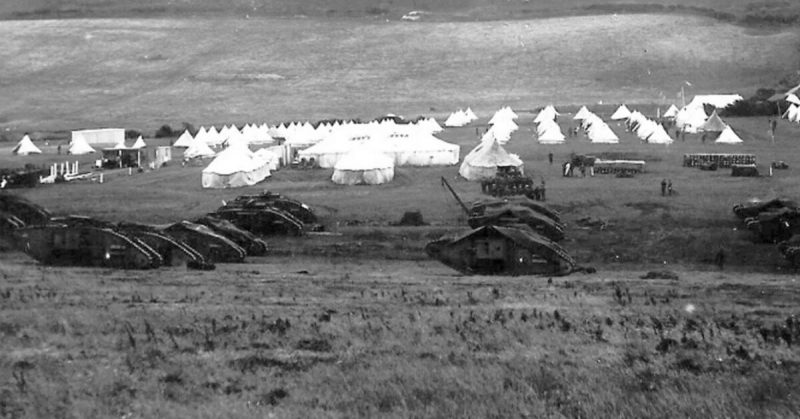While Bovington is the ‘home’ of the tank, the gunnery training was done just down the road at Lulworth. However, that was not always the case.
In the very beginning The Armoured Car Section of The Motor Machine Gun Corps, what was later to become the Tank Corps, had great difficulty finding anywhere safe to learn to fire their six-pounder guns.
At Bisley in Surrey, their first home, shells strayed into the surrounding farmland so it had to be stopped before anything dreadful happened. Even when they moved up to Suffolk, at Elveden, it wasn’t much better but here at least their commander, Colonel Ernest Swinton, managed to get a stay of execution on a plea of urgency.
Later on some potential tank gunners were sent to Larkhill on Salisbury Plain and to HMS Excellent the Royal Navy’s Gunnery School on Whale Island. Here they did some of their training at sea, aboard HMS Drudge a retired gunboat now acting as a tender to Excellent. The motion of a ship at sea was supposed to offer the same effect of a tank moving across country; it didn’t of course but it was good training.
The Move to Dorset
When in October 1916 the centre of tank training moved down to Bovington in Dorset, they found just what they were looking for nearby. Bovington, just north of the village of Wool is not far from the Channel coast and due south, on that coast, is the beauty spot of Lulworth Cove. The land east of Lulworth is mostly agricultural, mainly farming land given over to grazing. It included the tiny fishing village of Tyneham, which had to be evacuated, otherwise the residents were mostly sheep who could easily be moved.
The unproductive heathland around Bovington was ideal for training tank drivers while machine-gun firing could be practiced on the ranges at Moreton nearby and at Holton Heath near Wareham. But until official sanction had been given, there was nowhere to fire the main gun, the 57mm six-pounder. Once this was done the Gunnery School at Lulworth could be opened. To begin with a six gun standing battery was opened, it fired at the back of a cliff and any ‘overs’ went sailing out to sea, where a safety limit had been fixed, later patrolled by Army launches.
Soldiers under instruction lived in tents, buildings were slow in arriving. When a strong sou’ westerly gale was blowing even the tents were vulnerable but they didn’t travel very far, a row of trees along the northern edge of the Camp stopped most of them and their occupants were able to retrieve their temporary homes and their belongings.
And this, more or less, is how things remained until the end of the First World War.
A message from the Tank Museum:
“Please Support Us: As a charity, we rely on public support for all our activities. Our work is funded entirely by people like you. With your support, we can continue to create content. With the right support we might be able to do it more regularly – and can be even more ambitious. Please Click on the Banner Below”
Thanks to the Tank Museum for this Blog, which originally appeared here.

